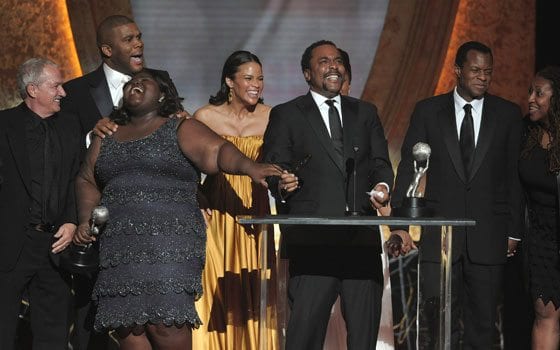
The full, ungainly title makes the film’s origin clear: “Precious: Based on the novel ‘Push’ by Sapphire.”
But with all the critical acclaim, the endorsements from Tyler Perry and Oprah Winfrey, the nominations and awards, the movie has predictably managed to overshadow the book that made it all possible.
In a talk last week at the Harvard Humanities Center, Brandeis University Assistant Professor Aliyyah Abdur-Rahman explored the novel’s themes and their meaning for the African American community.
Originally published in 1996 but set in the 1980s, the book tells the story of Claireece Precious Jones of Harlem — 16 years old, illiterate, abused by her mother and pregnant by her father for the second time. Despite seemingly insurmountable obstacles, Precious seeks to take control of her own fate through education and the support of other poor women of color.
It’s important to remember, Abdur-Rahman said, that the book was written at a time when the minor structural gains of the Civil Rights Movement had been largely undone as a result of conservative claims that affirmative action was no longer necessary and that welfare was the refuge of cheats and layabouts.
Abdur-Rahman said that beneath the horror of the abuse that Precious endures, the novel is ultimately about the failure of the system to protect her and the necessity of people of color building their own support systems.
In her view, the book contains “an inclusive politics of racial uplift that is suitable to our post-Civil Rights moment and an adaptive strategy of social survival for impoverished African Americans, one in which the travails of racism, urban poverty and familial ruin are overcome through inter-class, cross-racial, and trans-cultural coalition-building,” she said.
Though Precious suffers the physical and sexual abuse in private and beyond the reach of any public service agency, its effects are there for all to see.
But they are ignored in “public schools, welfare offices, shelters, hospitals and the like, exposing the failure of these government agencies and the people employed in them to respond effectively to the needs of one horrifically abused black girl named Precious,” she said.
Even when Precious explains in the hospital after delivering her first child that the baby was conceived with her own father, no one intervenes and she is sent back home.
Beyond having their needs overlooked by the state, Abdur-Rahman said that Precious and the real women the character represents are often forced by welfare reform laws into taking menial, low-pay jobs with no chance for advancement — nor flexibility to look after their own children.
“The assumption underlying this recommendation,” she said, “is that there is some social inadequacy or criminal propensity that disqualifies Precious from public support. In other words, Precious is not presumed worthy by the state of public assistance.”
The support and empowerment that Precious so badly needs ultimately comes not from the state or her biological family but from the group of other under-educated and abused young women of color that she met through a pre-GED literacy program.
It’s with those women, a surrogate family of sorts, that she gains the ability to express herself and begins to discover her own value.
The value she finds in herself, Abdur-Rahman said, is in contrast to the low valuation of women implied by the “unqualified endorsement of resurgent black patriarchy.”
In a response to Abdur-Rahman’s talk, Northeastern University Assistant Professor of English Kimberly Juanita Brown said that “Push” presents a view on the way “young, black, and in particular, female bodies” are exploited and their fates dictated to them by the very state that fails to protect them from harm.
Brown said that Sapphire joins post-Civil Rights era African American women writers such as Toni Morrison, Alice Walker, Gayl Jones and Toni Cade Bambara in examining the way that negative stereotypes devalue black women and their experiences.
But despite placing the book in an important tradition of literary protest, both Brown and Abdur-Rahman expressed reservations about the book’s excesses, including the grotesque and unredeemed cruelty of both Precious’ parents.
In an informal conversation that followed the prepared remarks, Abdur-Rahman said, “Part of my work with “Push” is about recuperating it for myself, because I do have a very difficult and painful history with the novel.”
She said she first read “Push” in graduate school, when one of her professors assigned it as a provocation. “‘Would you ever teach this when you become an African American literature professor?’ And I was like, ‘No!’” — partly because she was concerned about confronting the stereotypes Sapphire utilizes and partly because many critics and scholars have a low opinion of it.
She now teaches it every semester, and she said, “I actually find it a much more beautiful text as I work with it and read it.”






